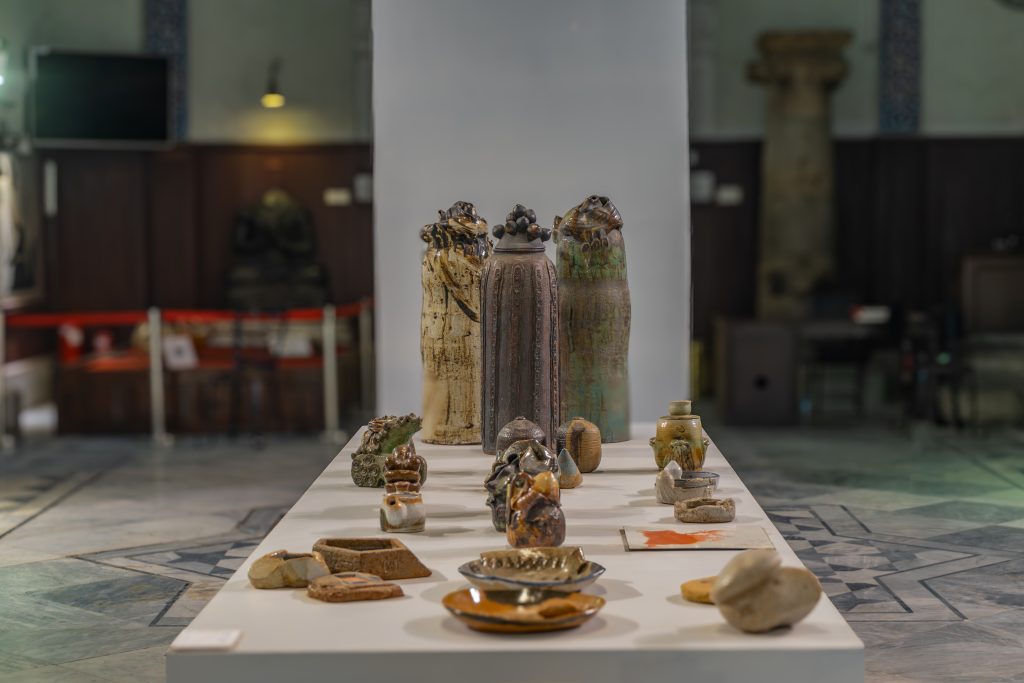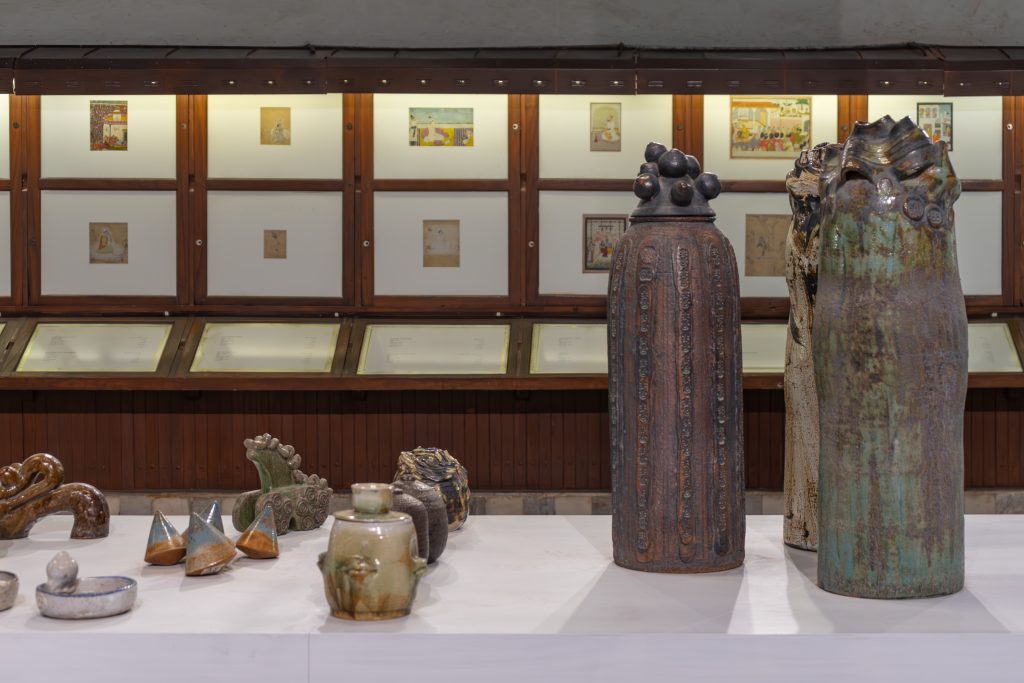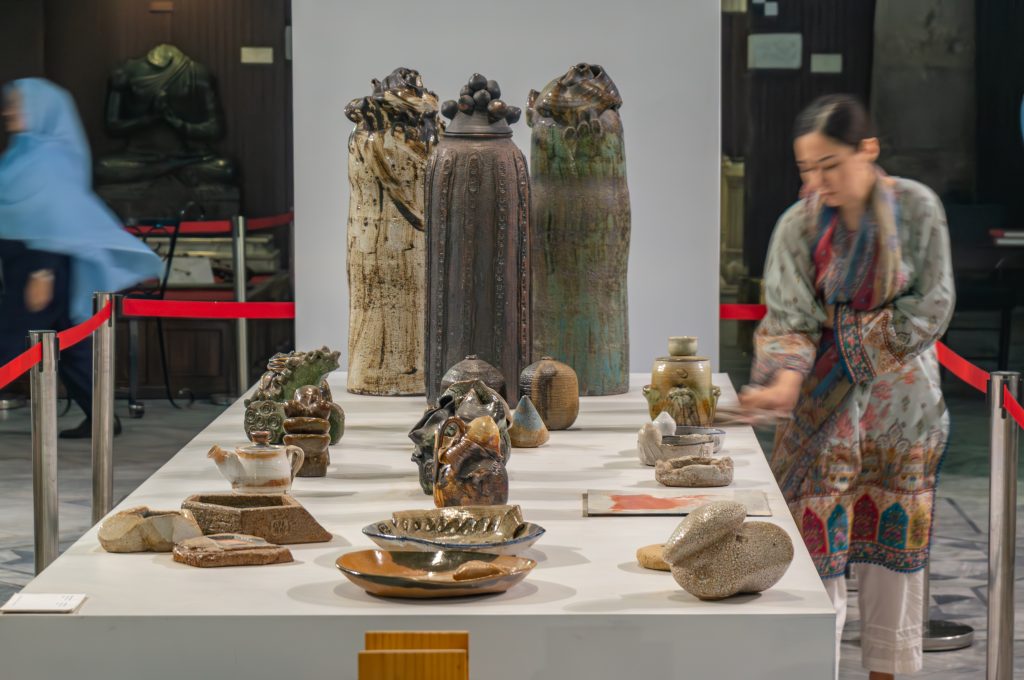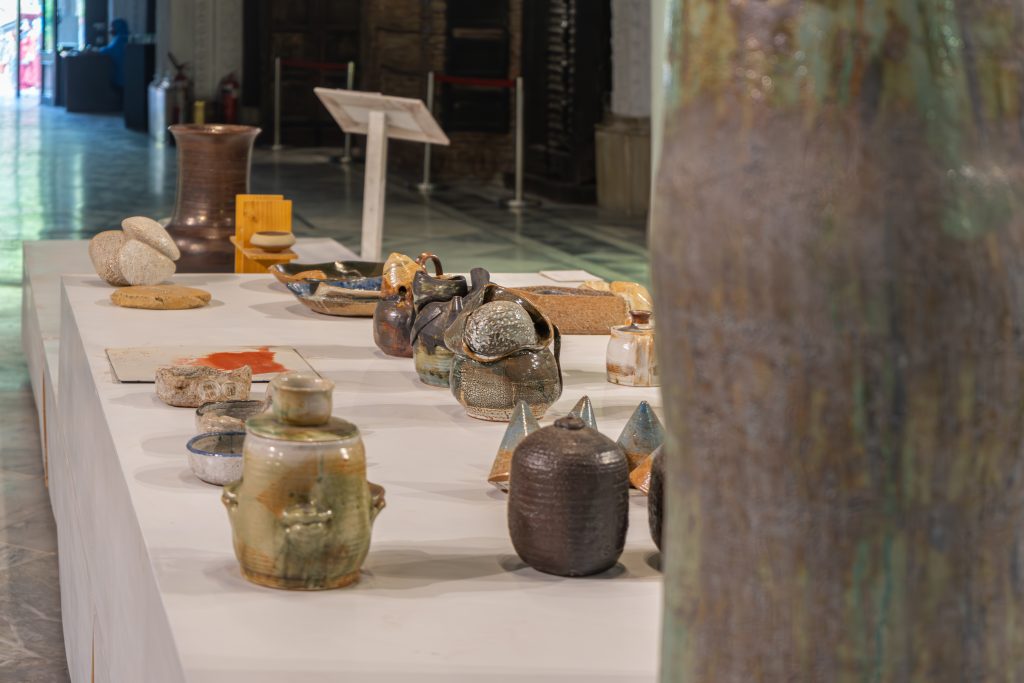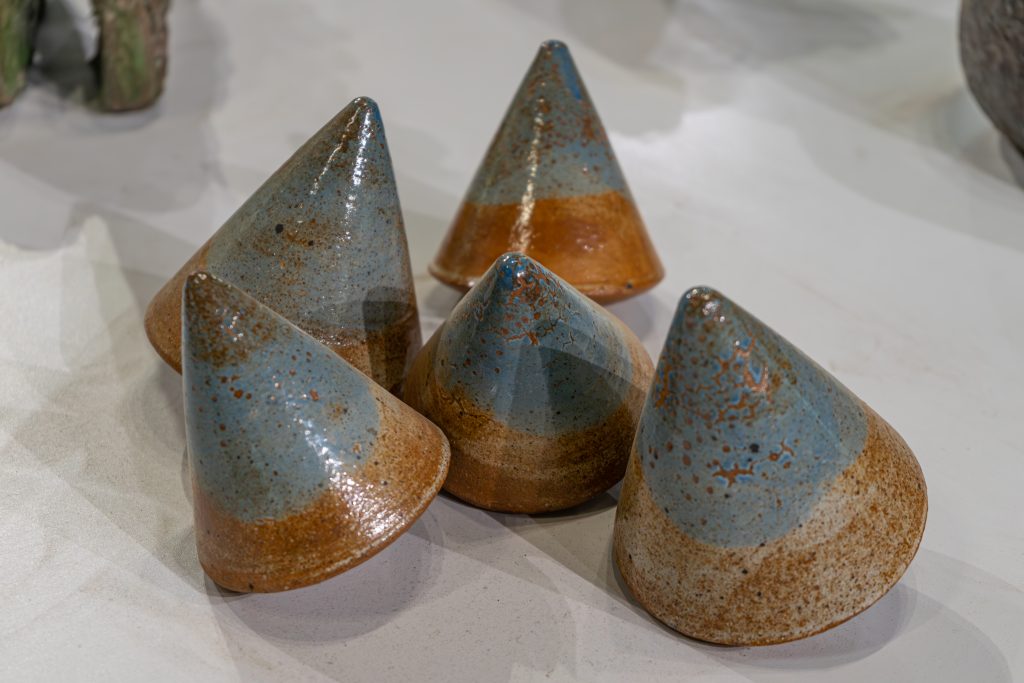Salahuddin Mian
Selection of Untitled ceramic pieces, 1960s-1990s
The ceramic pieces on loan from the Furqaan Ahmed collection offer a glimpse into Salahuddin Mian’s prodigious output. They encompass the earlier round vessels and ghughu ghoray (reminiscent of clay horses toy from ancient Harappa), cookie or pickle jars and taller vessels with mouths and breast-like appendages, as well as smaller hand-sized lattoos (tops), samosas, and ashtray-sized slabs with glass glaze. The contrasts of texture and deeply organic forms suggest an artist not attached to the symmetries and technical perfection of traditional ceramics. As his nephew Ahmed Mian recollected, “His deep level of conscientiousness can be summed up in one powerful example: I recall him once telling me that his innate love for ceramics stemmed from the fact that using his hands to work with clay as a medium allowed him within his own mind to somehow connect with land-associated activities and traditions of his father and ancestors who had also worked with their hands and with the earth. He got peace and contentment in being connected to the ancient familial traditions of Kasur, while embracing the present moment, and forging something for the future” (Noorjehan Bilgrami, ed. Born of Fire: Salahuddin Mian, 2007).
Salahuddin Mian (1938-2006) was born in Kasur to a landowning farm family. The first graduate to major in ceramics at the National College of Art, Lahore, he was awarded a Fulbright Scholarship in 1965 and spent a year at the Cranbrook Academy in the United States. He became a professor at the NCA and retired as head of the department in 1998. Having been taught by the Japanese ceramicist Koichi Takita, his works were often as painterly as they were sculptural. Mian stayed a vegetarian for much of his life, and was known for traveling only by bicycle. He is widely acknowledged as Pakistan’s first ceramic artist.
صلاح الدین میاں
بلاعنوان مٹی کے فن پاروں کا انتخاب، 1960- 1990
نیشنل کالج آف آرٹس کے شعبہ سرامک آرٹ کے پہلے فارغ التحصیل اور پاکستان کے پہلے سرامک آرٹسٹ کے طور پر جانے جانے والے صلاح الدین میاں کے مٹی کے فن پارے اُن کی اعلیٰ فنی صلاحیتوں کا واضح ثبوت ہیں۔ اُن کے بھتیجے احمد میاں کے بقول، ” ان کے اپنے پیشے کے ساتھ کمال درجے کے لگاؤ کو ایک مثال میں بیان کیا جا سکتا ہے۔ مجھے یاد پڑتا ہے کہ اُنہوں نے ایک بار مجھے بتایا تھا کہ مٹی کے فن پاروں سے ان کی محبت کی وجہ یہ ہے کہ اپنے ہاتھوں سے مٹی پہ کام کرنے سے انہیں زمین سے متعلق سرگرمیوں اور اپنے آباء کی روایتوں کے ساتھ جُڑے رہنے کا موقع ملا ہے جنہوں نے اپنی دھرتی پر اپنے ہاتھوں سے محنت کی تھی۔ ”اُنہیں قصور کی قدیم خاندانی روایتوں کے ساتھ جُڑے رہنے اور بیک وقت دورِ حاضر کے تقاضوں کو گلے لگانے سے سکون و اطمینان ملتا تھا۔” نور جہاں بل گرامی، آتش کی پیدائش۔ صلاح الدین میاں، 2007
صلاح الدین میاں (2006-1938) پاکستان کے پہلے سرامک آرٹسٹ کے طور پر جانے جاتے ہیں۔ نیشنل کالج آف آرٹ کے شعبہ سرامک آرٹ کے پہلے فارغ التحصیل ہونے کی حیثیت سے انہیں 1965 میں فل برائٹ اسکالرشپ سے نوازا گیا اور یوں وہ امریکہ کی کرین بک اکیڈمی میں ایک برس تک زیر تعلیم رہے۔ بعدازاں، وہ این سی اے کے پروفیسر بنے اور 1998 میں ہیڈ آف ڈیپارٹمنٹ کے عہدے سے ریٹائر ہوئے۔ جاپانی سرامسٹ کوئچی تکیتا سے متاثر میاں کے فن پاروں میں اکثر مجسمہ سازی کے ساتھ ساتھ فنکارانہ مصوری کا رنگ نمایاں نظر آتا ہے۔
Lent by Dr. Furqaan Ahmed from the Furqaan Ahmed Collection

